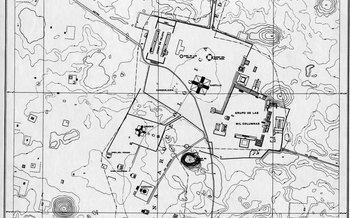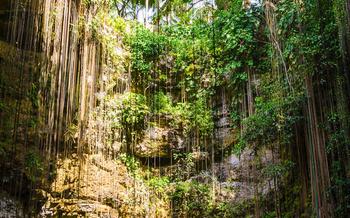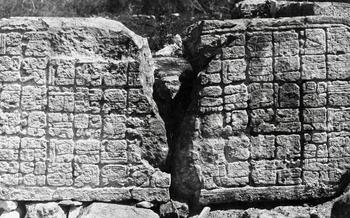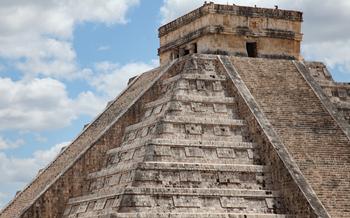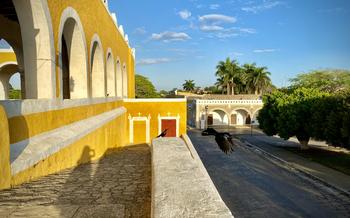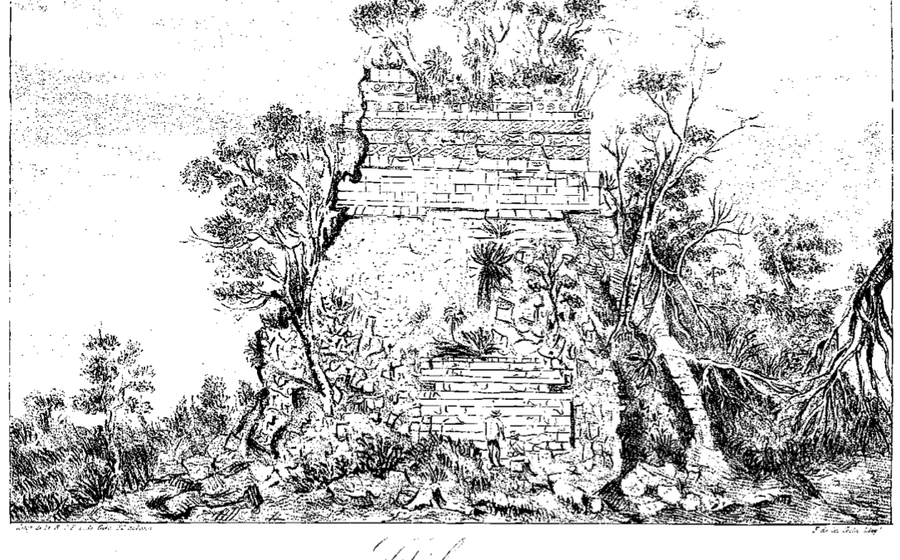
Cenote Verde Lucero
- Chichen Itza and the Cenote Verde Lucero
- Brief History of Chichén Itzá
- Location and How to Get to the Cenote Verde Lucero
- The Importance of Cenotes in Mayan Culture
- Magical Properties Attributed to Cenotes
- The Unique Beauty of Cenote Verde Lucero
- Exploring the Cenote's Caves
- Legends and Myths of the Cenote
- The Cenote's Cultural Significance
- The Cenote's Environmental Importance
- The Cenote's Archaeological Importance
- Cenote Etiquette
- Photography Tips
- Nearby Attractions
- Accommodations and Dining Options
- Insider Tip: Unveiling Hidden Treasures
Chichen Itza and the Cenote Verde Lucero
Nestled in the heart of the Yucatan Peninsula, Mexico, lies the ancient Mayan city of Chichén Itzá, a UNESCO World Heritage Site renowned for its iconic pyramids, temples, and cenotes. Among these natural wonders, the Cenote Verde Lucero stands out as a captivating spectacle of natural beauty and cultural significance.
Brief History of Chichén Itzá
Chichén Itzá flourished as a major political and economic center of the Mayan civilization between the 7th and 13th centuries AD. The city was abandoned around the 15th century due to reasons that remain shrouded in mystery, leaving behind a legacy of awe-inspiring ruins that continue to captivate visitors from around the world.
Location and How to Get to the Cenote Verde Lucero
The Cenote Verde Lucero is situated approximately 2 kilometers from the main entrance of Chichén Itzá. To reach the cenote, visitors can follow the signs from the main road leading to the archaeological site. The cenote is easily accessible by car or taxi, and there is ample parking available near the entrance.
The Importance of Cenotes in Mayan Culture
Cenotes, or natural sinkholes, were of immense importance to the ancient Mayans. They served as a vital source of fresh water, especially during the dry season, and were considered sacred places associated with various deities. The Mayans believed that cenotes were portals to the underworld, known as Xibalba, and conducted religious ceremonies and rituals at these sites.
Magical Properties Attributed to Cenotes
Cenotes were believed to possess magical and healing properties. The Mayans associated cenotes with fertility, regeneration, and purification. They believed that swimming in cenotes could cleanse the body and soul, and that the water had healing powers. Cenotes were also seen as places of communication with the gods, and offerings were made to appease the deities and seek their blessings.
The Unique Beauty of Cenote Verde Lucero
The Cenote Verde Lucero stands out from countless other cenotes due to its unparalleled beauty. Its crystal-clear waters, so transparent that one can see the bottom from the surface, invite visitors to take a refreshing dip. The cenote's lush vegetation, composed of tall trees, ferns, and tropical flowers, creates an enchanting ambiance, transforming it into a natural paradise. The surrounding jungle teems with diverse wildlife, including colorful birds, scurrying lizards, and playful monkeys, adding to the cenote's charm. Whether you're a nature lover, an adventurer, or simply seeking a serene escape, Cenote Verde Lucero promises an unforgettable experience.
Exploring the Cenote's Caves
Beneath the surface of Cenote Verde Lucero lies a hidden world of caves, waiting to be explored. These caves are interconnected, forming a labyrinthine network that extends far beyond the visible cenote. Guided tours are available for those who wish to venture into this subterranean realm, providing a unique opportunity to witness the natural wonders that lie beneath the earth.
The caves are adorned with impressive stalactites and stalagmites, which have been formed over thousands of years by the slow dripping of water. These calcite formations create an otherworldly landscape, with towering columns, delicate chandeliers, and intricate drapery-like structures. As you explore deeper into the caves, you'll discover hidden chambers and passageways, each revealing its own unique beauty.
In addition to their geological significance, the caves of Cenote Verde Lucero also hold archaeological importance. Ancient Mayan artifacts have been discovered within the caves, providing valuable insights into the culture and beliefs of this ancient civilization. These artifacts include pottery shards, tools, and even human remains, suggesting that the caves were used for various purposes, including rituals, ceremonies, and burials.
Exploring the caves of Cenote Verde Lucero is an unforgettable experience that combines adventure, history, and natural beauty. Whether you're a thrill-seeker, a nature enthusiast, or a history buff, you'll find something to captivate you in these hidden depths.
Legends and Myths of the Cenote
The Cenote Verde Lucero is steeped in a rich tapestry of legends and myths that have been passed down through generations. According to Mayan legend, the cenote was created when the god Chaac, the god of rain, struck the ground with his lightning bolt, creating a deep hole that filled with water. The Mayans believed that the cenote was a sacred place, a portal to the Mayan underworld, Xibalba. They would often make offerings to the cenote, throwing precious objects into its depths to appease the gods and ensure a bountiful harvest.
Stories abound of sacrifices made to the cenote, particularly young maidens who were believed to possess a special connection to the water. It was said that these sacrifices would ensure the cenote's continued existence and bring good fortune to the Mayan people. The cenote was also believed to have healing properties, and people would come from far and wide to bathe in its waters, seeking cures for various ailments. To this day, the cenote is considered a place of healing and rejuvenation, and many visitors come to experience its mystical powers.
The Cenote's Cultural Significance
Cenotes held a profound cultural significance for the ancient Mayans. They were considered sacred places, gateways to the underworld, and a source of life and sustenance. Mayans believed that cenotes were inhabited by spirits and deities, and they performed rituals and ceremonies to honor these beings. Offerings, such as jade, pottery, and even human sacrifices, were made to appease the gods and ensure a bountiful harvest and protection from harm. Cenotes were also a vital source of water for the Mayans, who relied on them for drinking, cooking, and irrigation. During times of drought, cenotes were especially important as they provided a reliable water supply. The Mayans also used cenotes for medicinal purposes, believing that their waters had healing properties. They bathed in the cenotes to cure illnesses and injuries and even drank the water to alleviate various ailments. Cenotes were also gathering places for the Mayan community, where people came together to socialize, trade, and celebrate festivals.
The Cenote's Environmental Importance
The Cenote Verde Lucero plays a crucial role in the Yucatan Peninsula's ecosystem. Its crystal-clear waters provide a habitat for a diverse array of plant and animal species, including various fish, turtles, and aquatic birds. The cenote's unique environment supports a delicate balance of life, contributing to the overall biodiversity of the region.
Furthermore, cenotes serve as a crucial water source for the local communities, providing drinking water, irrigation for agriculture, and a place for washing and bathing. They also act as natural filters, purifying groundwater and helping to maintain the quality of the water supply.
With the increasing popularity of cenotes among tourists, it is essential to prioritize their protection from pollution and over-tourism. Local authorities and conservation organizations are implementing various measures to preserve the cenote's natural beauty and ecological significance, including limiting the number of daily visitors, regulating activities within the cenote, and raising awareness about the importance of responsible tourism practices.
By respecting the cenote's environment and supporting sustainable tourism initiatives, visitors can help ensure that this natural wonder remains pristine and continues to support the local ecosystem for generations to come.
The Cenote's Archaeological Importance
Cenote Verde Lucero holds significant archaeological importance as it has yielded valuable insights into Mayan history and culture. During excavations conducted at the cenote, archaeologists have unearthed a wealth of Mayan artifacts, including pottery, jewelry, and tools. These artifacts provide clues about the daily lives, customs, and beliefs of the ancient Mayans who inhabited the region. The cenote has also revealed skeletal remains, offering researchers a glimpse into the burial practices and rituals of the Maya. Ongoing archaeological research at the site continues to uncover new discoveries, shedding light on the rich cultural heritage of the ancient civilization. Preserving the cenote's archaeological heritage is crucial for understanding the complex history of the Maya and their enduring legacy in the Yucatan Peninsula.
Cenote Etiquette
When visiting the Cenote Verde Lucero, it's essential to be mindful of your behavior and its impact on the natural environment and the Mayan culture. Here are a few guidelines to follow:
-
Respect the natural environment: Avoid littering, using harsh chemicals, or disturbing the wildlife. The cenote is a delicate ecosystem, and it's essential to preserve its beauty and biodiversity.
-
Be mindful of your noise level: The cenote is a place of tranquility and reflection. Avoid loud conversations, music, or other noises that could disturb the peace and serenity of the site.
-
Respect the Mayan culture: The cenote is a sacred place for the Mayan people, and it's essential to respect their customs and beliefs. Avoid wearing revealing clothing or engaging in activities that could be considered disrespectful.
-
Interact with the local Mayan community: Take the opportunity to interact with the local Mayan community and learn about their culture. Be respectful of their traditions and customs, and support local businesses by purchasing souvenirs or hiring a local guide.
Photography Tips
Capturing the mesmerizing beauty of Cenote Verde Lucero through photography is an experience in itself. To capture stunning shots of the cenote's crystal-clear waters, consider using a waterproof camera or a waterproof housing for your camera. This will allow you to dive into the cenote and capture the underwater world, showcasing the diverse aquatic life and the intricate rock formations.
For the best lighting conditions, plan your visit during the early morning hours when the sunlight filters through the jungle canopy, creating a magical play of light and shadows. This is also the time when the cenote is less crowded, allowing you to capture serene and undisturbed shots.
When shooting underwater, remember to adjust your camera settings to compensate for the lack of natural light. Experiment with different shutter speeds and apertures to find the perfect balance between capturing the vibrant colors of the cenote and ensuring sharp focus.
To capture the cenote's lush vegetation and the surrounding jungle, use a wide-angle lens to fit more of the scenery into your frame. This will allow you to showcase the cenote's natural beauty and its harmonious coexistence with the Mayan jungle.
Remember, patience is key when it comes to cenote photography. Take your time to explore different angles and perspectives, and don't be afraid to experiment with different settings and techniques. The more time you spend observing and understanding the cenote's unique features, the more stunning your photographs will be.
Nearby Attractions
While the Cenote Verde Lucero is a must-visit destination in its own right, there are plenty of other attractions in the surrounding area that are worth exploring. For those interested in further cenote adventures, there are several others located nearby, each with its own unique charm and characteristics. Cenote Azul, Cenote Ik Kil, and Cenote X'kekén are just a few of the many options to choose from.
Beyond cenotes, the ancient Mayan city of Chichén Itzá is a must-visit for any traveler to the Yucatán Peninsula. With its impressive pyramids, temples, and ball courts, Chichén Itzá offers a glimpse into the rich history and culture of the Maya. The colonial city of Valladolid is another popular destination, known for its well-preserved architecture, charming streets, and delicious local cuisine.
For those seeking more off-the-beaten-path experiences, the ruins of Ek Balam and Cobá are worth considering. Ek Balam is a smaller, less-visited site that offers a more intimate glimpse into Mayan life, while Cobá is known for its towering Nohoch Mul pyramid, which can be climbed for stunning views of the surrounding jungle.
Accommodations and Dining Options
When planning your trip to the Cenote Verde Lucero, you'll find a range of accommodation options to suit different budgets. From budget-friendly guesthouses to luxurious eco-lodges, there's something for every traveler.
For those seeking a truly immersive experience, consider staying in a traditional Mayan village, where you can learn about the local culture and traditions firsthand. Several guesthouses and homestays in the area offer a chance to connect with the Mayan community and support sustainable tourism.
When it comes to dining, you'll be spoiled for choice. Local restaurants serve up delicious traditional Mayan cuisine, featuring dishes like cochinita pibil (slow-roasted pork), panuchos (fried tortillas topped with beans, meat, and vegetables), and poc chuc (grilled pork with a tangy citrus marinade).
Don't miss the opportunity to try fresh seafood at one of the many restaurants along the coast. The Yucatan Peninsula is renowned for its ceviche, a refreshing dish made with raw fish or shrimp marinated in citrus juices and spices.
For a unique culinary experience, head to one of the local markets, where you can sample a variety of street food, including handmade tortillas, fresh fruit, and traditional snacks.
Insider Tip: Unveiling Hidden Treasures
Unveiling the hidden gems of Cenote Verde Lucero requires a keen eye and a willingness to explore beyond the beaten path. For those seeking a secluded swimming spot, venture off the main trail to discover a hidden cove where you can immerse yourself in the tranquil waters amidst the lush greenery.
To uncover the secret cave adorned with ancient Mayan carvings, embark on a guided tour that delves into the cenote's hidden chambers. Marvel at the intricate artwork etched into the cave walls, offering a glimpse into the rich history and spiritual significance of this sacred site.
To experience the cenote's magic at its peak, plan your visit during the early morning hours when the sun's rays illuminate the crystal-clear waters, casting a spellbinding glow on the surrounding landscape. This ethereal ambiance creates an unforgettable experience that will leave you mesmerized.
Finally, embrace the local culture by engaging with the Mayan vendors who offer a variety of handmade souvenirs. Don't be afraid to bargain for the best price, as it's a customary part of the shopping experience. Your purchases not only support the local economy but also serve as a tangible reminder of your extraordinary journey to Cenote Verde Lucero.

